Hairstyling

Hairdressers help people to look and feel their best. They may be asked to curl, wave, perm, bleach, tint or dye a customer’s hair, or merely to cut and style it.
Each appointment begins with a consultation with the customer, to find out what they want done to their hair and offer potential options. They may suggest a hairstyle compatible with the client’s physical features, or determine the best style from the client’s instructions and preferences.
To complete the appointment, hairdressers advise patrons on how to care for their hair, discuss any problems and recommend appropriate hygiene and styling practices. Before starting on the next customer, they always clean and sanitize their hairdressing equipment.
As styles continually change and evolve, hairdressers must also continue to upgrade and learn new skills to keep up with new trends, products and styles. This training may involve travelling to attend conventions and hair shows, or taking short courses at private styling schools
Main dutiesHairstylists perform some or all of the following duties:
- Suggest hair style compatible with client's physical features or determine style from client's instructions and preferences
- Cut, trim, taper, curl, wave, perm and style hair
- Apply bleach, tints, dyes or rinses to colour, frost or streak hair
- Analyze hair and scalp condition and provide basic treatment or advice on beauty care treatments for scalp and hair
- Clean and style wigs and hair pieces
- Apply hair extensions
- May shampoo and rinse hair
- May perform receptionist duties and order supplies
- May judge in competitions
- May train or supervise other hairstylists, hairstylist apprentices and helpers.
Who do they work for?
- Salons
- Self-employed
- Training schools
- Hair replacement clinics
- Retail environments
- Entertainment industry
Sample titles
- Scalp treatment specialist
- Wig maker
- Esthetician
- Hairdresser
Essential Skills
- Oral communications
- Thinking: critical thinking
How to join the field
- Some secondary school education is required.
- Completion of a two- or three-year hairstyling apprenticeship program or completion of a college or other program in hairstyling combined with on-the-job training is usually required.
- Several years of experience may replace formal education and training.
- Employers may require applicants to provide a hairstyling demonstration before being hired.
- There are various provincial/territorial certification and licensing requirements for hairstylists, ranging from trade certification to licensing by a provincial/territorial association. Interprovincial trade certification (Red Seal) is also available for qualified hairstylists.
Salary
For more information, contact:
Skills/Compétences Canada294 Albert Street, Suite 201
Ottawa, ON K1P 6E6
Tel: 877 754 5226
Website : http://skillscompetencescanada.com/en/
